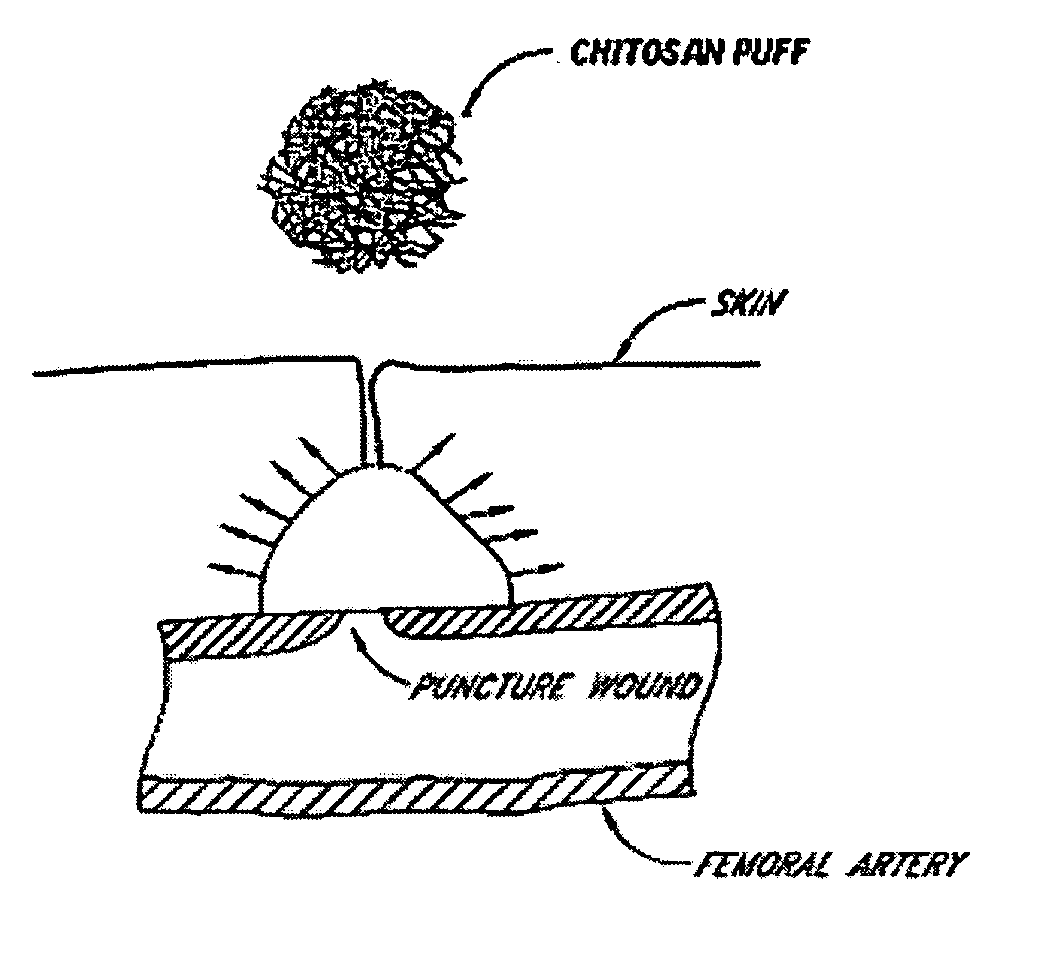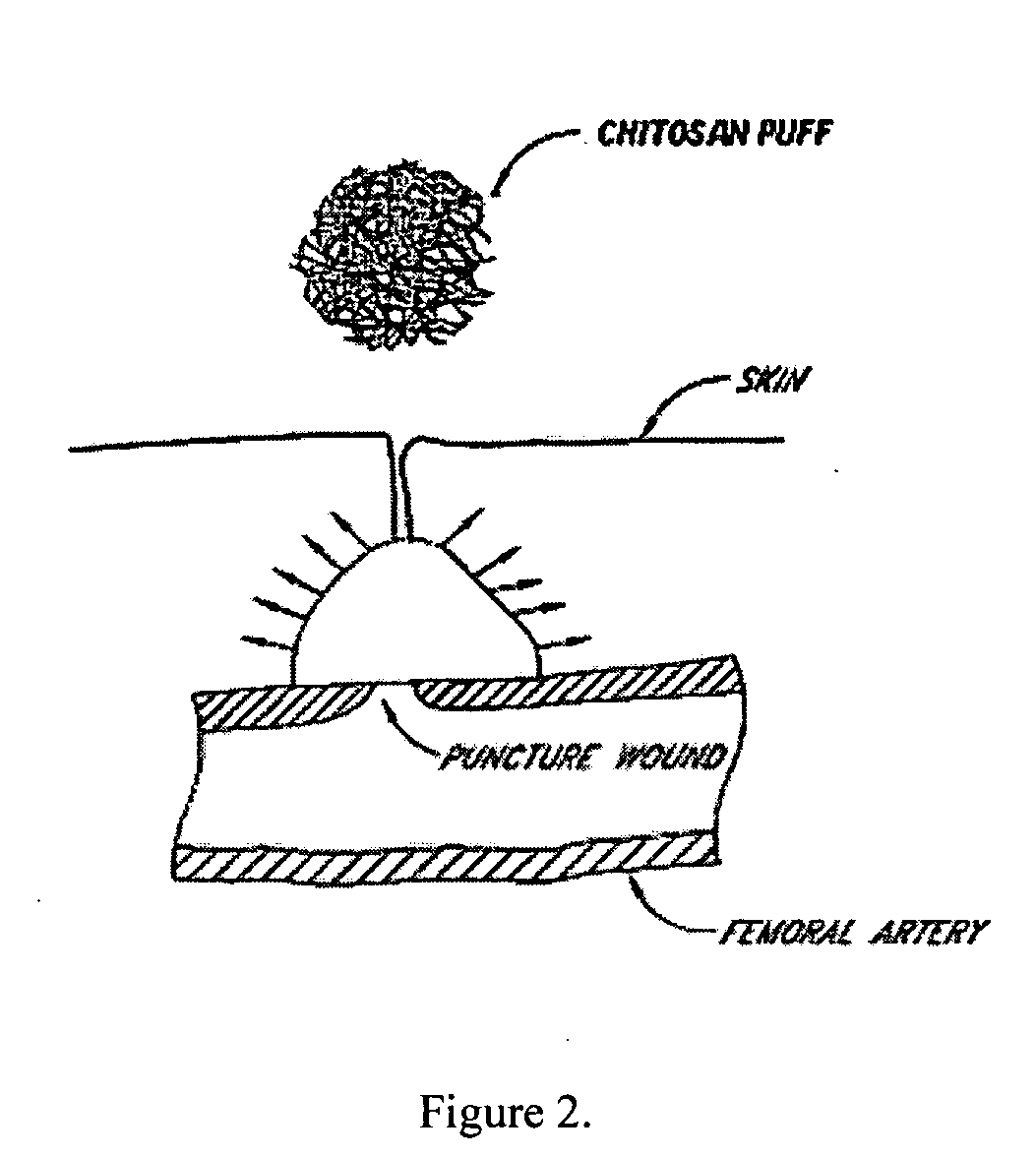Hemostatic agent for topical and internal use
- Summary
- Abstract
- Description
- Claims
- Application Information
AI Technical Summary
Benefits of technology
Problems solved by technology
Method used
Image
Examples
Embodiment Construction
[0036] The following description and examples illustrate a preferred embodiment of the present invention in detail. Those of skill in the art will recognize that there are numerous variations and modifications of this invention that are encompassed by its scope. Accordingly, the description of a preferred embodiment should not be deemed to limit the scope of the present invention.
[0037] Hemostasis is the arrest of bleeding, whether by normal vasoconstriction, by an abnormal obstruction, or by coagulation or surgical means. Hemostasis by coagulation is dependent upon a complex interaction of plasma coagulation and fibrinolytic proteins, platelets, and the blood vasculature. There are three categories of hemostasis: primary hemostasis, secondary hemostasis, and tertiary hemostasis.
[0038] Primary hemostasis is defined as the formation of the primary platelet plug. It involves platelets, the blood vessel wall and von Willebrand factor. Injury to the blood vessel wall is in...
PUM
| Property | Measurement | Unit |
|---|---|---|
| Fraction | aaaaa | aaaaa |
| Atomic weight | aaaaa | aaaaa |
| Molecular weight | aaaaa | aaaaa |
Abstract
Description
Claims
Application Information
 Login to View More
Login to View More - R&D
- Intellectual Property
- Life Sciences
- Materials
- Tech Scout
- Unparalleled Data Quality
- Higher Quality Content
- 60% Fewer Hallucinations
Browse by: Latest US Patents, China's latest patents, Technical Efficacy Thesaurus, Application Domain, Technology Topic, Popular Technical Reports.
© 2025 PatSnap. All rights reserved.Legal|Privacy policy|Modern Slavery Act Transparency Statement|Sitemap|About US| Contact US: help@patsnap.com



